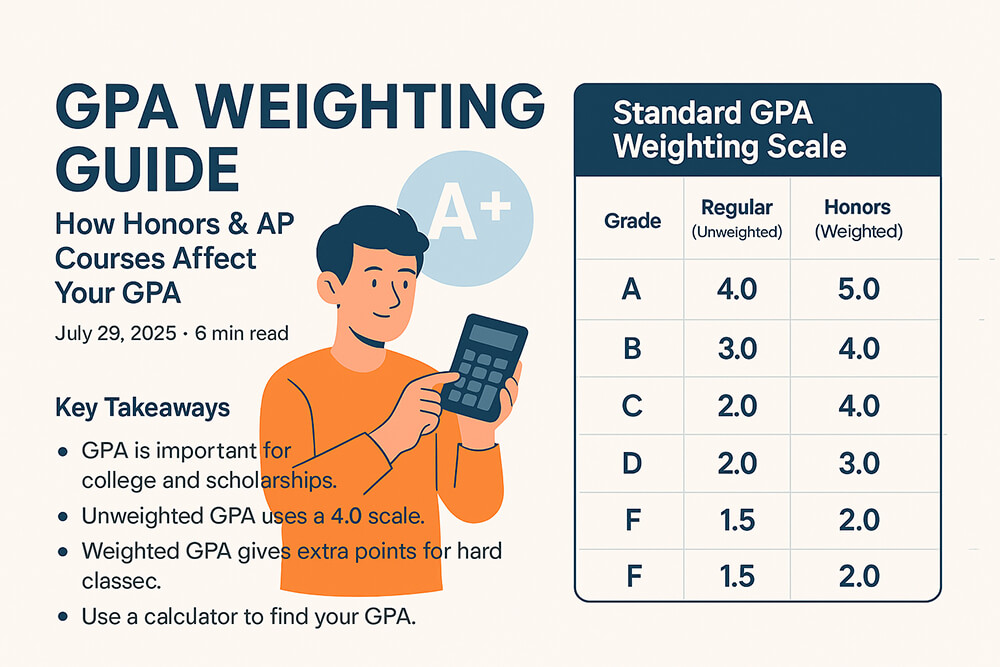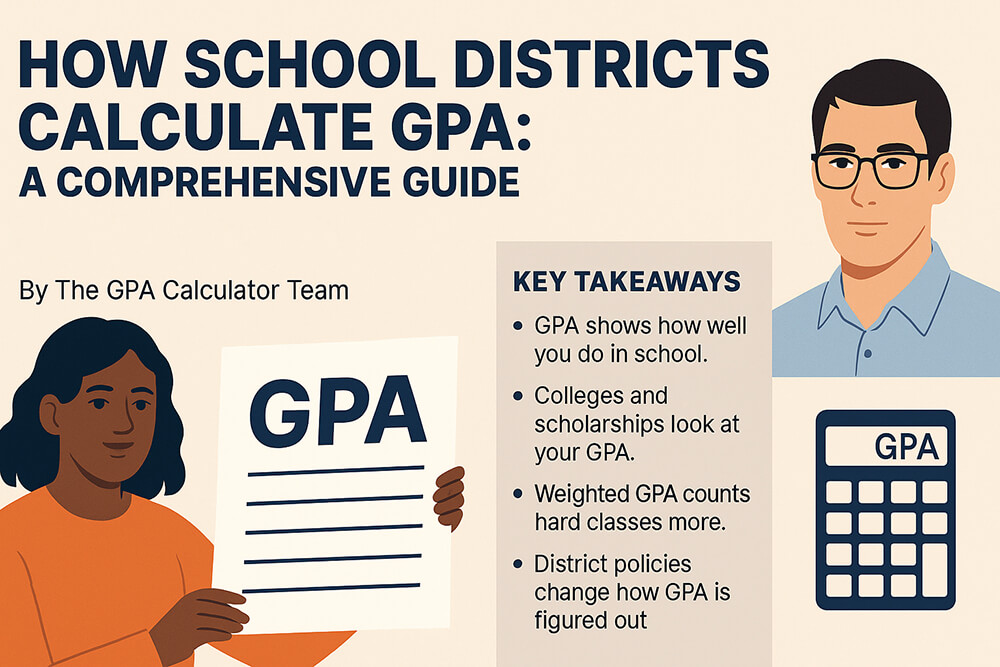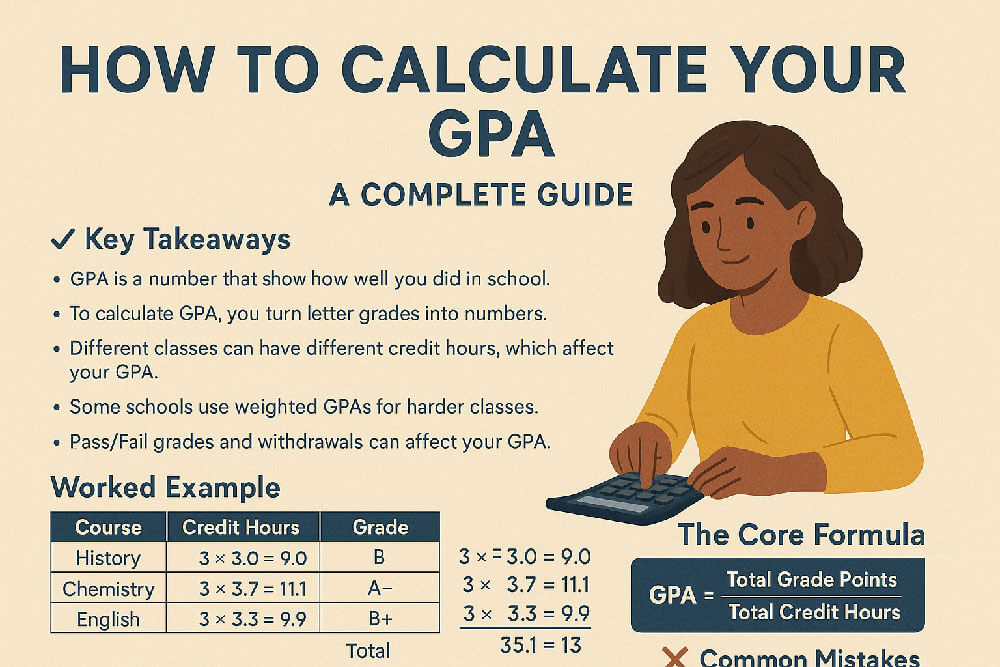Key Takeaways
| Point | What You Need to Know |
|---|---|
| Flagship GPAs | Admits often show 3.7–4.6 weighted GPAs. Unweighted is usually 0.2–0.5 lower. |
| In-State Edge | In-state kids get more seats. Some states offer auto-admit for top students. |
| Rigor Matters | AP/IB/Honors help. Schools use weighted GPAs to reward hard classes. |
| OOS is Tough | Out-of-state admit rates can be 8–20% at the hardest flagships. |
| Raise Your Odds | Audit your transcript, set a target GPA, fix weak study habits, and plan your next term with tools below. |
How Flagships Read GPA
Flagships like strong grades and tough classes. They use weighted GPA to reward AP/IB/Honors. Unweighted sits a bit lower. If you take hard classes and keep A-range marks, you stand out. If your school does not weight, they recalc. So, push rigor you can handle and keep steady A/low-B work.
Typical GPA Ranges at Flagships
Recent profiles show many admits in the 3.7–4.6 weighted band. Unweighted is often 3.7–3.9. Some STEM flagships read higher. Outliers exist, but they need strong extras or proof of growth. I coach kids to check the mid-50% range and aim above the center.
In-State vs Out-of-State Odds
In-state kids get more seats. Some states cap non-resident spots. That makes OOS admits tight. Check how your district builds GPA, since recalcs can shift rank. If you dip, protect standing and keep term grades clean.
Find Your Current Number
Start with the real math. Put in every course, credit, and grade. Check if your school uses quality points. Save a copy and update each term. This “truth file” guides your list.
Set a Target and Plan the Term
Pick a clear target for the next term. Build your schedule around that goal. Block study hours like a job. Short, daily blocks beat long crams. Track each class weekly.
Fix Common GPA Mistakes
Small errors lower GPAs. People miss credits, mis-enter grades, or mix scales. Pass/Fail can help, but use it with care. Audit your transcript twice a year.
Boost Rigor the Smart Way
Add rigor where you can keep A/low-B. Use IB/AP credit to lift the weighted line, not to drown in work. Know the 5.0 or local max and plan within it.
Course Repair & Positive Trend
If a class went wrong, fix the damage. Retake if your school allows a grade replacement. Show a clean upward trend. That line tells a simple story: you learned and leveled up.
Credit Moves that Help
Smart credit moves can raise your line. Transfer credit, dual degree plans, or abroad terms need careful math. Log the conversions and keep proof.
Scholarship & Honors Signals
Honors and dean’s lists do not replace GPA. They support it. Know the bars and plan to exceed them. Use them as checkpoints each term.
Quick Tools You’ll Use Most
Frequently Asked Questions
1) What GPA should I aim for as an in-state applicant?
Target the mid-50% range for your flagship. If it shows 4.2–4.6 weighted, set your next-term goal with the Semester GPA Calculator.

2) I’m out-of-state and near 3.8 unweighted. What helps most?
Show rigor with steady A/low-B grades. Use the GPA Weighting Guide and track a clean upward line with the GPA Trend Graph.

3) My school uses a different scale. How do I compare? Convert first, then plan. Start here:
4) Can Pass/Fail help me?
Sometimes. It can hide a low mark, but it may also block credit in a major. Read Pass/Fail Impact and run the Core vs Elective GPA.

5) My transcript has mistakes. What now?
Audit it and fix entries with your counselor. Use the Transcript GPA Audit Guide.
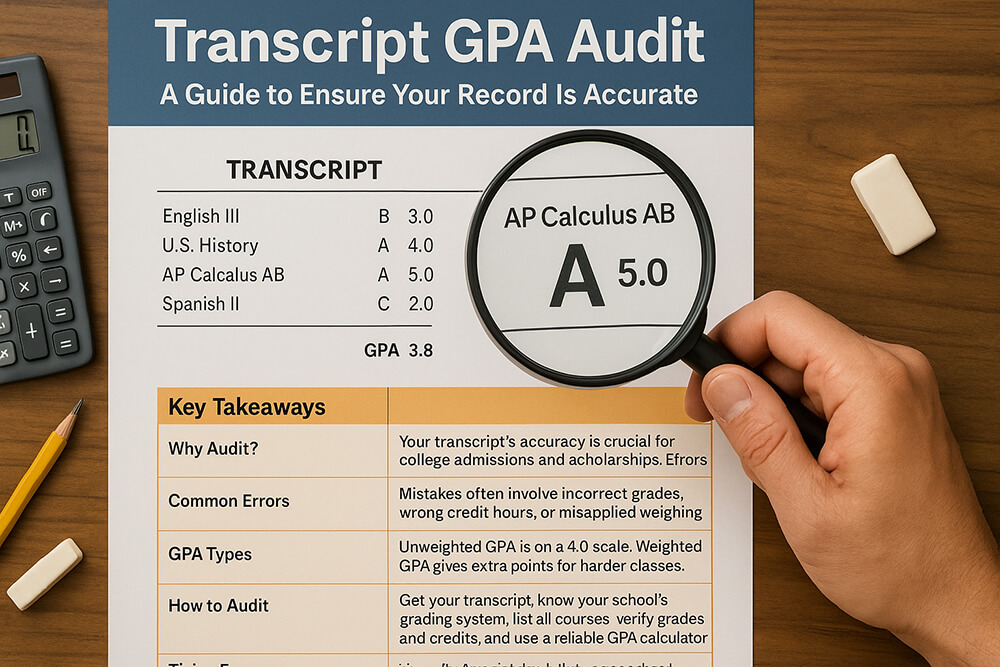
6) I took IB. How do I map to 4.0 or 5.0?
Use IB to GPA Conversion and the 5.0 Scale Guide.
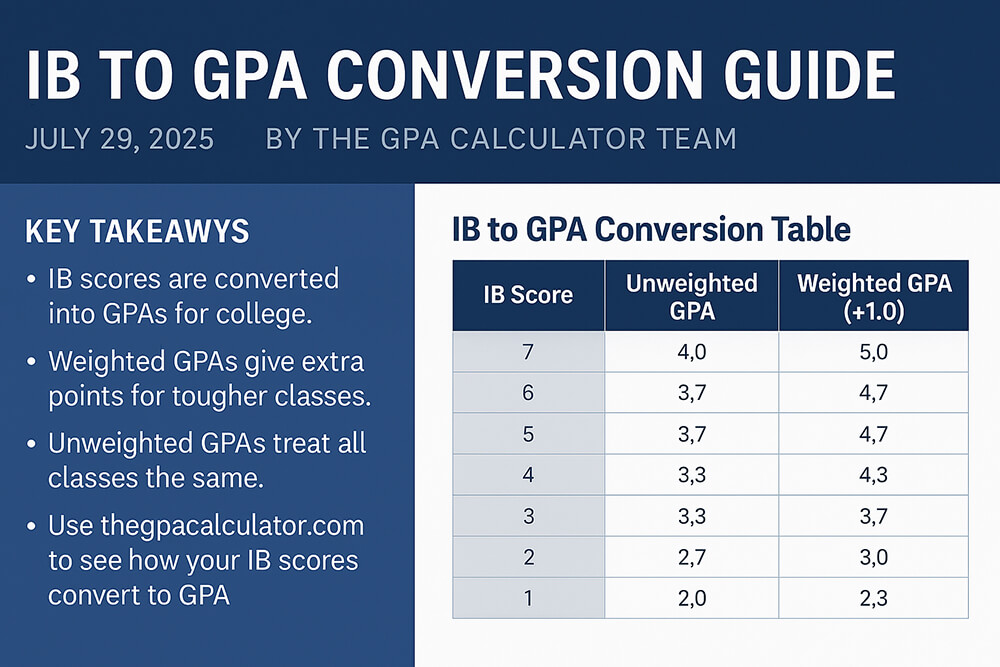
7) How do I boost fast without burning out?
Fix habits, not just hours. Start with the Study-Habit Audit and Study Tips for Better Grades.

8) My GPA is low. What’s the first move? Plan a repair term and use targeted grade replacement if allowed:
9) Do mid-term grades matter?
Yes. Track them and adjust weekly. Try the Mid-Term Projection Slider and Raise-My-GPA Action Plan.

10) Where can I run all my math in one place? Start here: TheGpaCalculator.com and these tools:
Extra Toolkit (quick picks)
-
Planning & Checks: GPA Planning for Incomplete Grades • Incomplete Grades Scenario Planner • Transcript GPA Audit

-
Conversions & Charts: Letter-to-Point Conversion • Percentage to 4.0 • GPA-to-Percent Reverse • 100-Point to 5-Point • 12-Point to 4-Point • 12-Point vs 10-Point • GPA Conversion Charts & Tools • Letter-Grade Heat Map
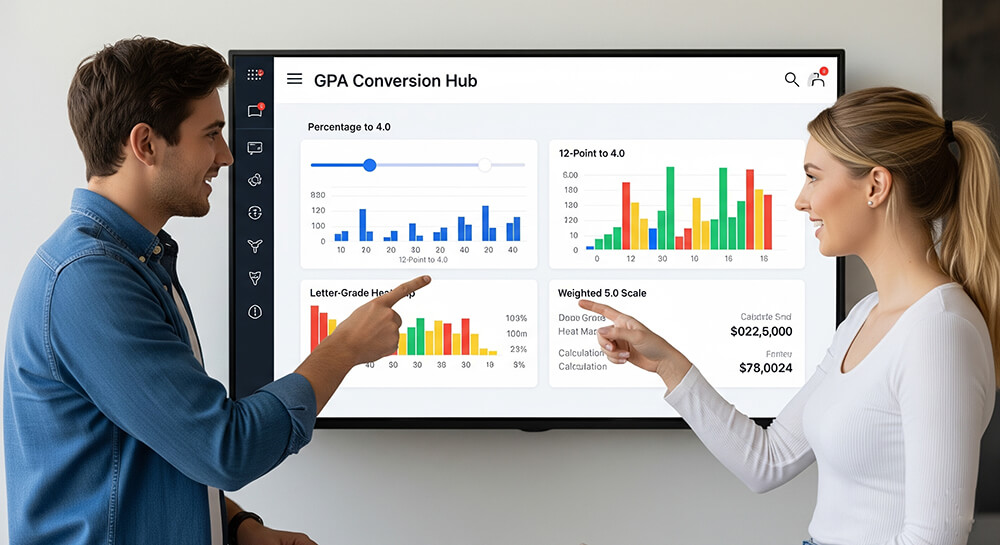
-
Scale Guides (Global): International GPA Converter Guide • Nigeria 5-Point to US 4.0 • China 100-Point to 4.0 • Ontario 12-Point to 4.0 • UK Class System to 4.0 • Indian 10-Point to 4.0

-
Planning & Growth: GPA Goal-Setting Worksheet • Study Tips • Study Tips (alt) • Time-Management Templates • Raise-My-GPA Action Plan

-
Specialized Calculators: Trimester GPA Calculator • Dual-Degree GPA Splitter • Weighted vs Unweighted Calculator • Freshman-Year Predictor • Last 60 Credits • Prerequisite-Only GPA • Major-Change Impact • Core vs Elective GPA • 4.0 vs 5.0 Outcome Simulator • Multi-Semester Bulk Import • Drop Lowest Grade Analyzer • Dean’s List Eligibility Checker • College GPA Calculator

-
Policy & Recovery: SAP guide • Reinstatement after Suspension • Credit-Recovery Course Finder

A quick coaching note
A student I coached sat at 3.76 unweighted, with light AP. We raised rigor by two APs she could master, fixed one low grade with a retake, and set a clear semester target using the Semester GPA Calculator. Her trend went up, and she cleared her flagship’s mid-50%.



